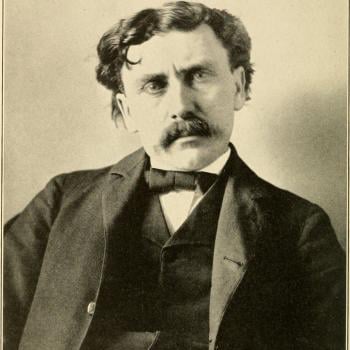Over the past couple of years my work has often brought me back to the writings of Josephus, and I just wanted to describe one Biblical-related problem that arises there. I claim little originality in what I am writing here, but am rather stating and summarizing a long-running debate. (Jewish readers, please avert your eyes: this will all be painfully obvious).
Briefly, how many books are there in the Old Testament? The standard Protestant answer is 39 books, although Catholics would respond differently, because they also include several Deuterocanonical works, like Sirach, Wisdom, and 1 and 2 Maccabees. So would Orthodox churches. The Ethiopian Biblical canon includes several truly ancient items unknown to churches anywhere else on the planet, including Jubilees and 1 Enoch.
That is straightforward enough, but the Jewish answer would be different again. They would describe the Bible as having 24 books, including all the texts in the Protestant Christian Bible, but structured and divided differently. The Jewish Bible has three sections, the Torah, Nevi’im and Ketuvim (Law, Prophets and Writings), which gives us the acronym Tanakh. In detail:
TORAH 5 BOOKS
Genesis, Exodus, Leviticus, Numbers, Deuteronomy.
NEVI’IM 8 BOOKS
Nevi’im Rishonim: Early Prophets, namely Joshua, Judges, Samuel and Kings.
Nevi’im Aharonim: Later Prophets, namely the books of Isaiah, Jeremiah and Ezekiel, and also a single book including the Minor Prophets.
KETUVIM 11 BOOKS
The Three Poetic Books (Sifrei Emet)
Tehillim/Psalms, Proverbs, Job.
The Five Megillot (Hamesh Megillot)
Song of Songs, Ruth, Lamentations, Qōheleth/Ecclesiastes, Esther.
Other Books
Daniel, Ezra/Nehemiah, Chronicles.
The Jewish canon has fewer books because it merges works that are separate in the Christian tradition, eg 1 and 2 Kings, 1 and 2 Chronicles, or Ezra and Nehemiah. That 24-book division goes back at least to the end of the first century AD, when it is recorded in 2 Esdras.
So, the number of Old Testament books is 24 or 39, and that is no great problem. But here we turn to Josephus, also writing around 95 AD in the Against Apion. He divided the books somewhat differently than the later Jewish canon, but also gives us a different total, namely 22:
For we have not an innumerable multitude of books among us, disagreeing from and contradicting one another [as the Greeks have], but only twenty-two books, which contain all the records of all the past times; which are justly believed to be divine; and of them five belong to Moses, which contain his laws and the traditions of the origin of mankind till his death… the prophets, who were after Moses, wrote down what was done in their times in thirteen books. The remaining four books contain hymns to God, and precepts for the conduct of human life.
The appeal of 22 is easy to understand, as that is the number of letters in the Hebrew alphabet, and the highly symbolic figure runs through early Qabalistic texts like Sefer Yetzirah. But how is Josephus extracting it from the Biblical canon? What might he be merging and combining, or even excising altogether?
One theory is that all the books we know are actually there, but attributed differently. For instance, perhaps Ruth is combined with Judges and Lamentations with Jeremiah. Or might some books not even have been canonical at this stage? Ecclesiastes comes to mind as a candidate for non-inclusion, as does Esther.
That would make sense in terms of the recent development of Jewish ideas about canon. The Law and the Prophets were reasonably fixed by the time of Sirach, around 180 BC, but debate continued for some time afterward about the Writings. Sirach probably did not acknowledge the Song of Solomon, Ruth, Esther and Daniel, if he even knew those texts.
I don’t have an easy answer for this, but it is instructive (and sometimes surprising) seeing alternative ways in which other believers structure and approach the Bible.












